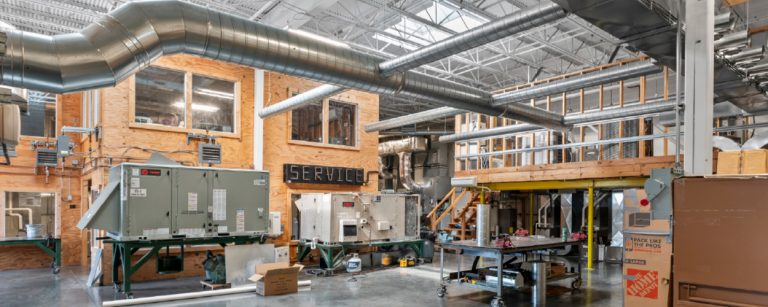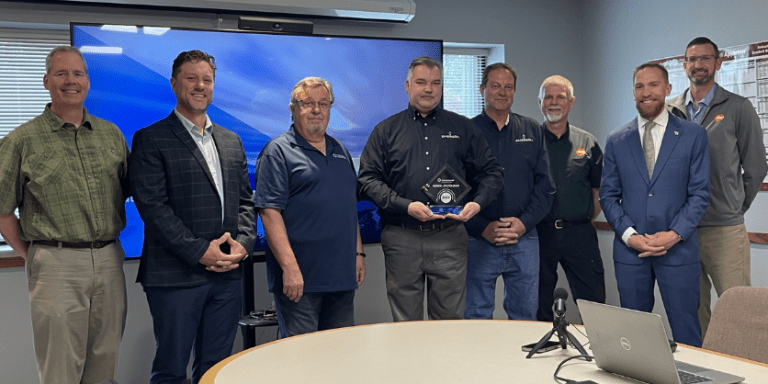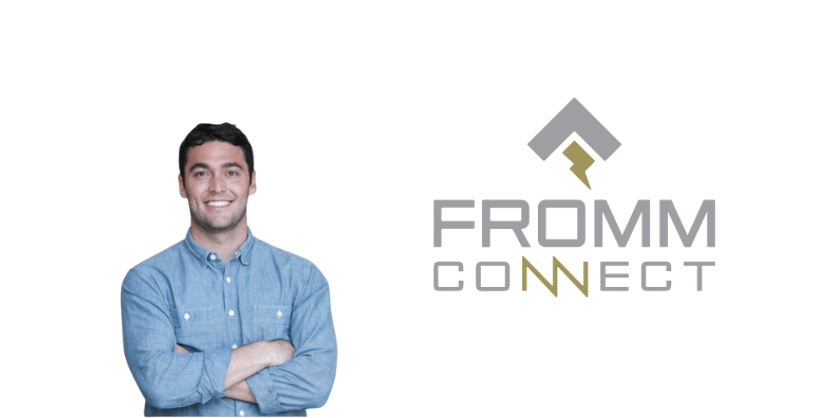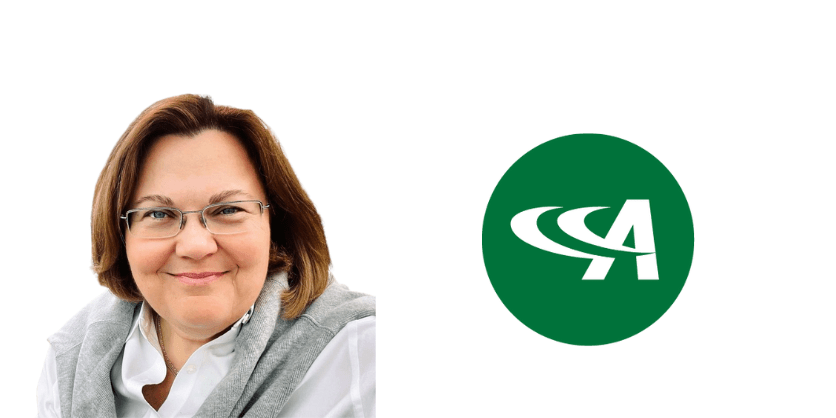NAILD Shares Concerns. DLC Responds

Recently NAILD (National Association of Innovative Lighting Distributors), which is an association of less than 100 relatively small lighting distributors and the division of some larger electrical distributors (including Rexel), shared a letter written to DLC (Design Lights Consortium), that its Board endorsed, with industry publications, including US Lighting Trends.
In the rather pointed letter, NAILD shared its “frustration,” perhaps “dismay” with DLC and its inability to be heard. They shared issues that they have with DLC and made a number of claims, which were detailed in the letter. They claim that they should be listened to as an industry stakeholder and call for the dissolution of DLC in 5 years.
They reference that they detailed their issues in a report that NAILD issued in May 2023 titled “The Findings of the Accreditation Agency Advisory Committee” with a subtitle of “The Complete and Total Failure of Prescriptive Rebates and Why it is the DesignLights Consortium’s Fault.”
The first sentence states “Wherefore, the committee has concluded that electrical utility lighting rebate programs that rely on product based certifications created by DLC have and continue to impact our customers with a host of negative unintended outcomes.”
They further state “To make rebate programs easier to administer for electrical utilities, they created their Qualified Products List (QPL).”
As you’ll see in NAILD’s letter, they feel that they haven’t been heard.
NAILD Shares Concerns, Wants to Be Heard
Letter from NAILD to DLC dated September 5, 2025, and shared with US Lighting Trends and other industry publications:
“Since 2018, we have consistently provided feedback that has been disregarded by your organization. When we joined your industry stakeholder committee, we raised issues and concerns that many of our colleagues had expressed. Rather than engaging in meaningful dialogue, you simply fired us from your committee.
ln 2023, we mailed you our Accreditation Agency Advisory Committee Report. Rather than addressing the substantive points raised, your only response was to note that the Design Lights Consortium is technically not an “agency.” Earlier this year, we sent additional letters, which received no formal response. Get a Grip on Lighting and Restoring Darkness, two podcasts NAILD is involved with, have offered you an open door to speak to our industry at any time, but you consistently declined. You ignore stakeholder feedback when it does not align with your position or interpretation of events, demonstrating a pattern that leads us to conclude that input from the lighting industry is a formality – that is designed to be ignored.
And once again, we find DLC issuing “deadlines” to our industry-the nightmare circus starting up all over again-requiring us to submit feedback within narrowly defined timeframes and through processes you orchestrate. Regardless of the feedback provided, we are ultimately expected to accept new certification standards that you impose. These certifications are then billed to lighting manufacturers, and these costs are naturally passed down the chain to lighting distributors and, ultimately, to the consumer. With each iteration our industry is then expected to “design lights” according to the standards that the DLC, in its sole discretion, dictates. Of course, technically, we are free to design any products we choose-but unless our products align with your latest specifications and we dutifully send checks to your organization, they will not be approved by your members, the electrical utilities, for participation in rebate programs that you control access to. ln practical terms, which leaves us with little choice.
What of the costs? Since the industry began designing lighting to meet your certification criteria, light pollution of all kinds has risen drastically across the country. That’s one of the unintended-but entirely predictable-consequences of your approach that we warned you about. Not a mistake for you to acknowledge and admit but rather an opportunity to slap a new certification label together to supposedly solve the very problem your previous certifications created. You chose a sleek name-LUNA-to market the new certification to cover all the mistakes you made with previous QPLs.
You’re not solving any problems or creating a more sustainable future; you’re feeding off us, milking our industry for rent while your certifications are the causes of the very harms you claim to fight.
Flickering LED TLEDs and flat panels? All DLC certified. And now, most of the products bearing your seal are on track to become a catastrophic tidal wave of DLC-certified e-waste garbage. We warned you over and over again with our feedback about future lighting waste. Yet DLC intentionally ignored us, the only lighting industry association that represents the distributors who actually stock and supply the replacement components that repair light fixtures. You asked for feedback but expected cheerleading.
The current issues facing the lighting industry are tied directly to the design criteria imposed by your certification. We outlined these in detail in the report we referenced earlier which you ignored. We sent it privately to you out of courtesy but it is now available at www.NAlLD.org/DlCreport.
Has anyone stopped to ask you what the actual mandate of your 501(c)3 charity is? Why are you a charity?
Why are American taxpayers subsidizing product labelling for electrical utility lighting rebate programs?
Americans are already paying for these programs through increases in the price of electricity. What charitable service could you possibly be providing? Or is all this about something else entirely?
ls it simply time for another round of industry-wide extractions, dressed up as progress, to keep the cash rolling for DLC and its for-profit partners who absorb the vast majority of your charity’s revenue? Whatever the motivation, another round of “what can DLC tinker with now” makes absolutely no sense to us whatever your tax status is. lt’s directionless, disconnected from reality, and completely out of touch with the real challenges the industry is facing.
ln any event, here is our stakeholder feedback-from the people on the frontlines of this industry, the distributors who stock and sell the components that repair light fixtures, the people who filled out and filed tens of thousands of rebate applications trusting in your certification for our customers, the stakeholder group you intentionally ignore:
- Put a 5 year moratorium on all revisions or changes to current DLC Product Labelling certifications for lighting products, including LUNA, and guarantee that they will stay in place until 2030.
- Plan for the sunsetting of all DLC Product Labels and Certifications in the lighting industry by the year 2030.
- ln 2030, leave the lighting industry permanently.
ln summary, DLC-certified equipment lies at the heart of the most pressing problems facing the lighting industry today-from the erosion of sustainability and the collapse of the right to repair, to the unchecked rise in light pollution and the loss of the night sky. From disrupted circadian rhythms to declining animal health, the environmental and biological consequences of your interventions are catastrophic and undeniable. The vast majority of negative impacts associated with electric lighting share a single common thread: they were certified by you-with trust in your certification as the key that unlocked mass adoption. Lt is time for you to call it a mandate and begin winding things down. You have done enough damage already.
AII questions and concerns with respect to this letter should be directed to the NAILD office at info@naild.org.
It was signed by Matt Honson, Thayer Lighting / Thayer Energy Solutions, and President of NAILD and T and Devin Hall, President of Louvers International and NAILD’s DLC Committee Chair.
Asking NAILD Questions
When I saw their missive, I reached out with a number of questions (bold) to NAILD and received responses from them (in italics). In some instances, I added other comments (within parentheses):
“Is this a BOD position or do all members (showrooms, distributors, and manufacturers) endorse this position? If “all,” or the membership, was it put to a vote? If so, what was the vote? We are halfway through our yearly member interviews. They take about an hour each and every member interviewed answered “Yes” to this question:
Would you support NAILD’s ongoing efforts to investigate the DLC’s financial structure and advocate for reforming its certification process to address these perverse outcomes and better align with the needs of our industry and our customers?”
NAILD members have been working on this file for four years and we have absolute total support from our membership and our vendors.
(So, about 50% of their 96 members, or no more than 48, responded yes. While distributors such as Rexel, FSG and LightServe are members, did senior management agree? And same with key manufacturers such as Keystone, RAB, Light Efficient Design, Satco, Current, MaxLite, and Halco? Further, NAILD’s BOD is made up of four (4) relatively small lighting distributors and their prior leadership consists of small lighting distributors.)
The tone of the letter sounds like it is from a specific individual who is well tied to NAILD. OK. Only two of our members have a podcast. So, you are either referring to Greg Ehrich or Michael Colligan (commentors on Get a Grip on Lighting who have a unique style.) They don’t like DLC but this letter was written and signed by our DLC Committee Chairman Devin Wall and our President Matt Honson. It doesn’t really have anything to do with them.
Stating that a 501c3 is a “charity” is incorrect. 501c3’s are non-profits and a non-profit, from a legal and tax perspective, is not necessarily a “charity.” Further “associations,” and presumably NAILD, are 501c3’s and I know that most, if not all, professional standards bodies are 501c3’s (I have legally set up one.)Your statement is simply incorrect. 501(c)3’s are charities and can issue tax deductible receipts for donations. NAILD is a 501(c)6 non-profit. DLC is a charity without a doubt. (I admit, I forget the sub-designation, however, no one thinks of DLC as a charity for a tax write-off.
I recall a conversation I had years ago with an individual with a New England utility company who told me that the utilities were the driving force behind the creation of the DLC. And, since most, if not all, utilities are governed by state law, there is government approval of utility rebates. Further the rebates were conceived to help lower grid demand, not to support the electrical / lighting distribution industry nor lighting manufacturers.)
How many distribution / showroom members does NAILD represent and approximately what % of the US distribution lighting market do NAILD members represent? Don’t know. 96 Members in NAILD. (I don’t know if this is solely distributors or if it includes the number of manufacturers. As of earlier this month, NAILD had 25 distributors and 12 manufacturers attending / exhibiting at their upcoming convention which is held in late September.)
Not having read the reasons for NAILD’s objections, see our detailed report at www.NAILD.org/DLCreport
Is this a technical issue or a commercial issue? If commercial, why should a standards body be concerned about the commercial aspect if those involved haven’t raised? We don’t understand your question.
From my experience with being on standards bodies, the members of the standards committees are typically technical in nature however supported by the commercial aspect of their companies. We don’t understand your question. Best to review our 2023 report.
Isn’t this more of a manufacturer issue rather than a channel issue? It is a lighting industry certification issue. It does not belong to one group or another. All lighting professionals are concerned about DLC.
And, if it is a channel issue, where does NAED stand on the matter? The retail community (Home Depot, Lowes, Walmart, etc.) A good journalistic opportunity to ask them.
Given that the number of NAILD members is significantly less, and much smaller, than NAED’s, why should the distributor “listen”? Does someone like Rexel, who is a NAILD member, endorse this at the North American, or corporate, level? NAILD represents Lighting Distributors. Electrical distributors also sell lighting and NAED is their representative association. It would refer you to them to get their opinion.
And why should specifiers and contractors be concerned about this? Has NECA and/or IEC been exposed to the issue? Are they concerned? What about IES and IALD? Great questions for you to ask them. We only speak on behalf of Lighting Distributors. Again, sounds like a good journalistic project.
As you may know, I know some of the manufacturers that are members of NAILD. Would NAILD mind if I spoke to some of them about their position on this letter and if they endorse NAILD’s stand? That is none of our business. You are free to ask anyone any questions you want. Same with some of the distributors, whom I also know? Same response. Ask anyone anything you want.
Could it be that be that DLC is listening to manufacturers, or other parties, and is less concerned about the input from a very small percentage of sellers of lighting? Your input could be valid but there could be other, larger, and “louder” voices. Sounds like a good journalistic project.
After receiving this, I reached out to DLC for some feedback and reviewed their website. First, some observations:
- They do get industry, as in ecosystem, feedback as they are involved in 17 external committees, inclusive of IES and NEMA committees (so, the design and manufacturing shareholders are engaged.)
- They have an Industry Advisory Committee which, on the distributor side, includes Sonepar and FSG (an NAILD member)! Further, there are 3 lighting control manufacturers and 8 lighting manufacturers (fixtures plus controls, and lamps). These 13 individuals provide an ecosystem viewpoint. Further, Sonepar and FSG probably represent much more lighting revenue than all of NAILD, whose members are renovation focused.
There could be an opportunity for NAED to get engaged through its Advocacy initiatives given that they represent almost 300 of the largest electrical, and hence lighting since lighting is about 15% of industry sales revenue.) This would be more representative of the lighting industry.
DLC Responds
Due to media publicity, DLC shared a response to NAILD’s communique on September 9th.
DLC Response to Recent Commentary
Thank you for reaching out for comment. Recent and ongoing public commentary has misrepresented DLC’s role and responsiveness while spreading inaccuracies that risk undermining the trust and collaboration the market depends on. We want to be clear: DLC engages regularly and openly with stakeholders through advisory committees, public comment periods, and direct outreach to manufacturers, distributors, utilities, and other partners. Constructive feedback is vital, and we actively seek it.
The hyperbole and falsehoods published by NAILD distracts from the real challenges of ensuring quality, advancing sustainability, and preparing for the next phase of innovation with lighting. The DLC team remains focused on advancing shared goals and working with partners who are committed to respectful dialogue and solution-driven progress.
After receiving inquiry letters signed by NAILD President, I reached out to him twice via LinkedIn and others at the DLC have tried to contact him through LinkedIn and his company, in Illinois. In response, the DLC received a letter instructing us to communicate only with the Get A Grip podcast producer and refrain from contacting NAILD’s President directly.
As an organization that regularly engages with stakeholders and partners in good faith, we find it illogical and insincere to decline our direct outreach.
A Shared Foundation
For context, it’s important to note the extraordinary progress the lighting industry has achieved in less than two decades. Together, manufacturers, distributors, utilities, and more have driven one of the most successful technology transformations in history: the rapid adoption of LED lighting. This shift has saved billions of dollars in energy costs, eliminated reliance on mercury-based fluorescent lamps, and ultimately reduced greenhouse gas emissions worldwide.
DLC is proud to support this progress by providing transparent, independent tools that help maintain quality and trust in the marketplace. Chief among these are the DLC Qualified Products Lists (QPLs). Accessed globally and required by more than 700 programs across North America, the QPLs provide validated performance data that represent minimum thresholds, not ceilings, to support innovation while ensuring consistency, reliability, and transparency. By consolidating efforts across the industry, the QPLs provide a reliable validation of savings for electric ratepayers and a manageable point of entry to billions of dollars’ worth of rebate programs across North America.”
So What?
At the end of the day, what does it mean?
From a third-party perspective, not much. NAILD’s leadership was able to express itself and created some buzz. Does it represent the lighting distribution industry, which is lighting and electrical distributors? No. But perhaps it shared the viewpoint of many of its distributor members.
I’ve worked with electrical distributors who have utilized rebates effectively to drive sales. They’ve learned how to educate their customers, market rebate initiatives locally, and develop infrastructure to help their customers with the rebate process. For some, it is a competitive advantage.
I’ve also had distributor clients who left rebate filing to their customers and/or their customers’ customers, not desiring to get involved. Inevitably their salespeople comment about how this can hinder sales efforts and that funds are “left on the table.”
So, it becomes a commercial issue, not a product quality issue.
And, from a product viewpoint, while many may complain about “costs” involved with DLC (and for that matter UL and its processes), manufacturers would like there to be less “choice” in the market, meaning, less manufacturers selling commoditized products that drive pricing down.
At the end of the day, it will not be distributors that influence DLC’s existence, let alone NAILD. The key customer entity / influencer are the utilities and the manufacturers. Distribution is the facilitator, not the voice of the customer and its best role, in this environment, is to drive demand by promoting the rebates and developing systems to manage them most efficiently. It can be a competitive advantage.
And, as an FYI, I don’t have a “horse in the game,” it’s just that commonsense and channel dynamics were not making sense. What are your thoughts? (and if you want to share confidentially, email me.)
Evolving with the Market
Lighting, like all technologies, continues to evolve. With LED adoption now widespread, the market is shifting toward higher-performing replacements and more sophisticated controls that enable electrification and demand management. Customers increasingly expect not just efficiency, but quality and flexibility.
The DLC’s role is also evolving with these market dynamics. We continue to provide independent, transparent specifications and resources that help meet new challenges, from reducing light pollution and protecting ecological health to advancing control programs that give customers greater choice in how they manage energy use. These goals are inherent in our Solid-State Lighting (SSL) V6 specifications, the first change in requirements since 2020, which are set to take effect in January 2026.
The DLC team appreciates the feedback that we have received on the V6 specification draft, as well as ongoing insight from the Industry Advisory Committee, LUNA Advisory Committee, the DLC Technical Committee, our Members and Program Planning Working Group. Likewise, we contribute to more than 15 external committees facilitated by IES, NEMA, and ASABE and hold memberships with regional IES chapters, which also provide diverse industry insight and experience.
Looking Ahead
The lighting industry has a remarkable record of innovation and collaboration. Even as the market matures, opportunities remain vast. Efficient lighting, advanced controls, and integrated systems will be critical to electrification, decarbonization, reduction of light pollution, and customer empowerment. These are fundamental to our next specification (SSL V6) and QPL.
The DLC is committed to those opportunities and to partners who also value them. Vitriol spreads division, but collaboration delivers progress.”
Author: David Gordon
Gordon is president of Channel Marketing Group. Channel Marketing Group works with manufacturers, distributors, manufacturer reps and technology companies in the electrical industry to help companies accelerate their performance through strategy development, marketing creativity and market research. CMG generates ideas that generate results.








